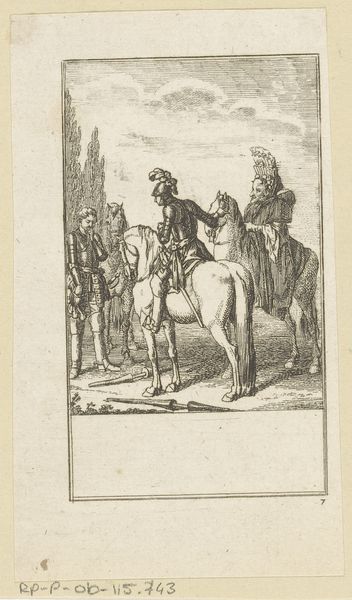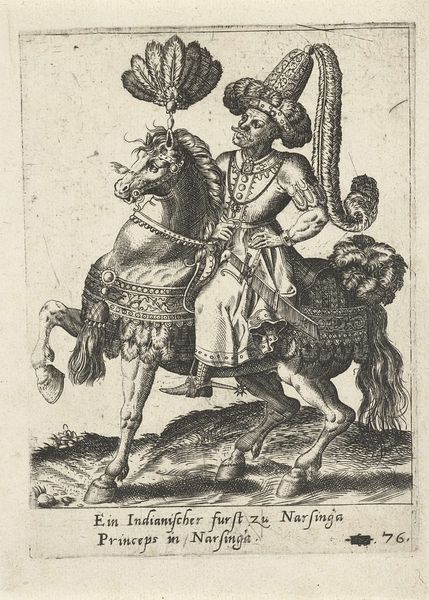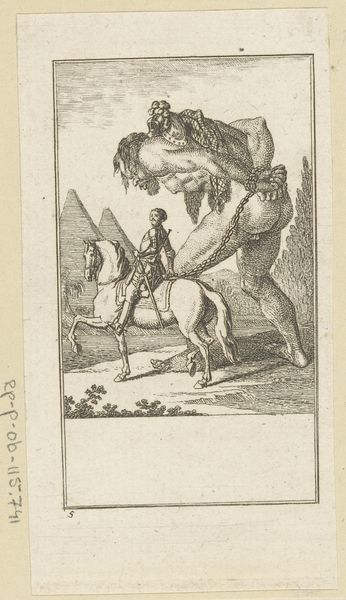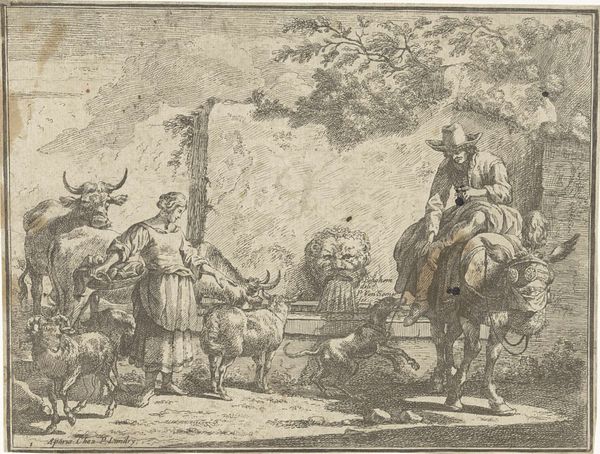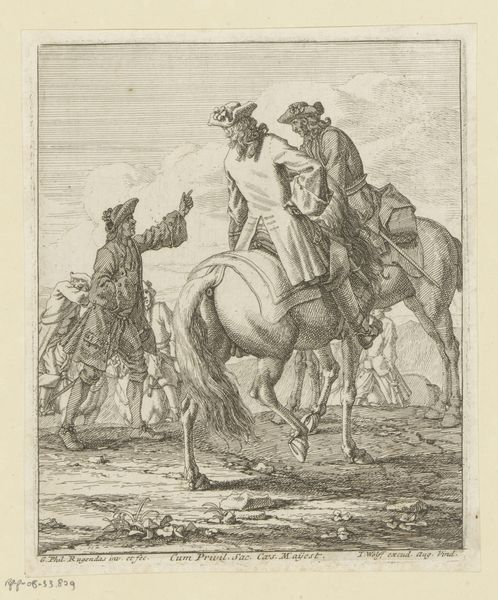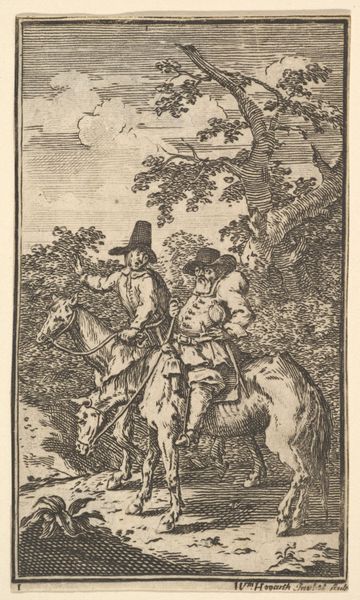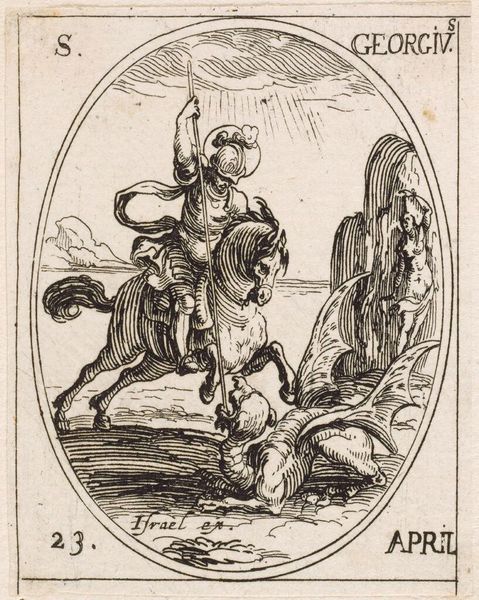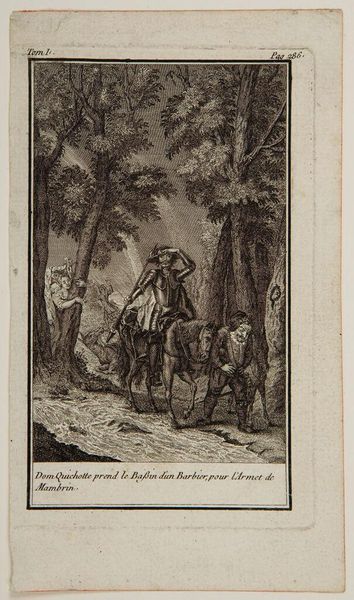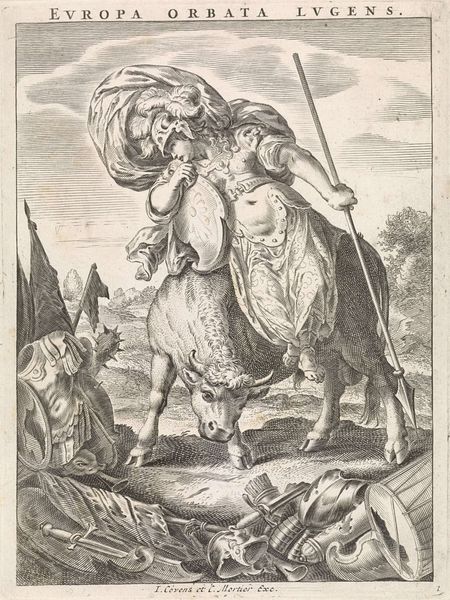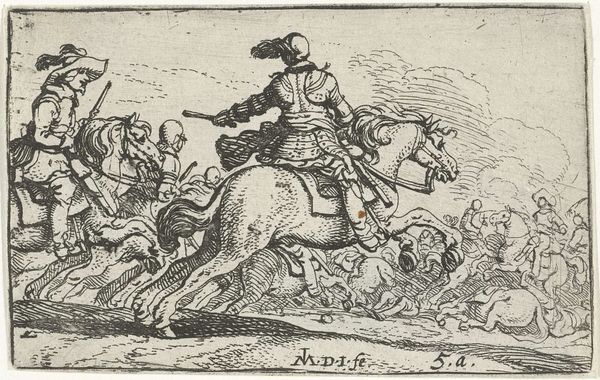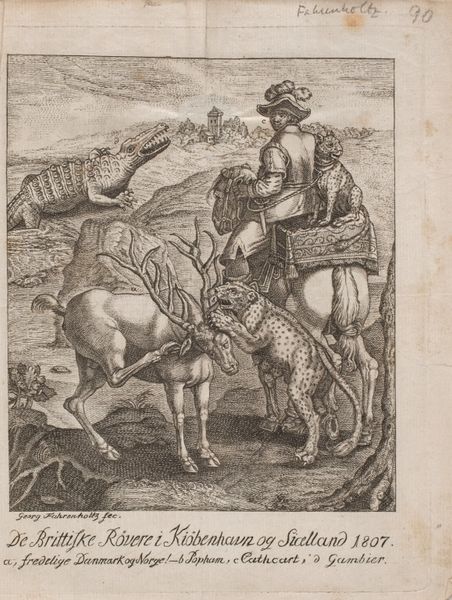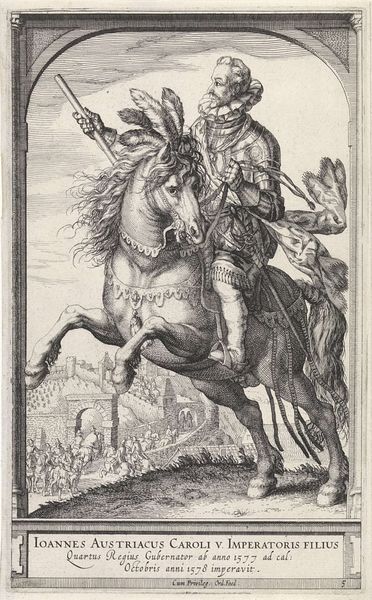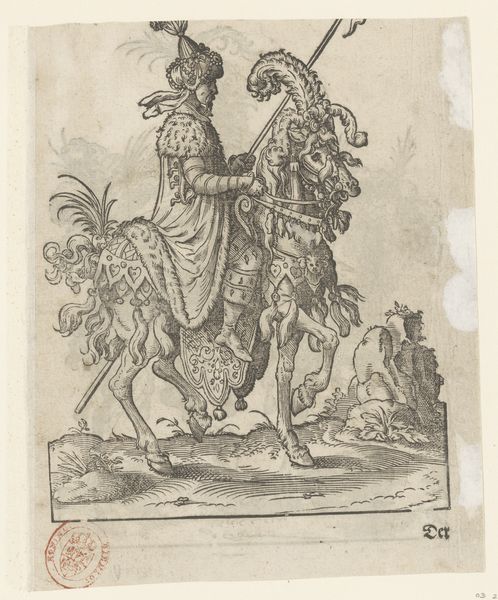
engraving
#
portrait
#
baroque
#
figuration
#
line
#
genre-painting
#
engraving
Dimensions: height 95 mm, width 66 mm
Copyright: Rijks Museum: Open Domain
Editor: This engraving, “Bereden Kameel” by Daniël (I) Herreyns, dating from between 1600 and 1649, has such an intriguing narrative feel. It almost looks like a scene plucked from an exotic storybook, doesn't it? What strikes me most is how detailed the figures and the camel are, considering it’s an engraving. How do you interpret the symbols within this image? Curator: It's fascinating how Herreyns uses familiar forms to suggest the exotic and foreign, isn't it? Consider the camel, burdened with what appear to be European travelers and goods. What does it signify when figures of apparent wealth are traveling on such a beast of burden? Look closer; is it simply a mode of transportation or a symbol of their assumed power? What kind of emotional connotations do camels evoke in European consciousness during this period? Editor: That’s a thought-provoking way to see it – it shifts from being just a picture of travelers to an exploration of cultural interactions, power dynamics, and probably a dash of exoticism. What about the servant figure walking alongside with the dog? Curator: Precisely. Notice the boy with the dog. The contrast between the camel riders and the one walking underscores social hierarchy. Dogs were frequent companions of elite Europeans. In what ways is he tied to both cultures in this scene? I wonder if his very presence blurs clear distinctions between the foreign and domestic contexts for 17th century audiences. Editor: I didn’t really consider the intercultural reading before, focusing more on it as just a genre scene. Now I realize it could be about the European fascination and perception of other cultures through this specific era's lens. Curator: Indeed. And visual language like this creates an enduring emotional and cultural connection. We continue to use familiar visual cues to shape perceptions of "otherness." Considering cultural memory helps make old art like this remain profoundly resonant today.
Comments
No comments
Be the first to comment and join the conversation on the ultimate creative platform.
